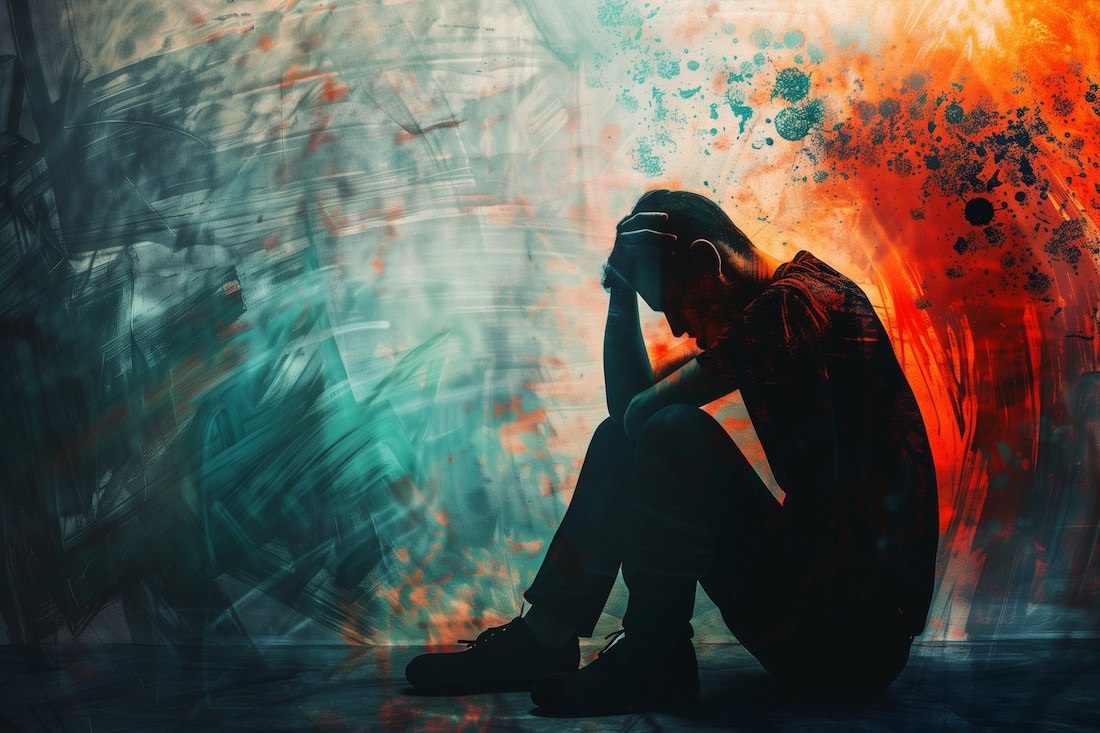Most people will experience at least one traumatic event during their lifetime. These experiences can cause severe negative effects on a person’s mental and physical health and can alter their lives for months or years. In the aftermath of a traumatic event, some people develop a web of physical and psychological symptoms that disrupt their ability to function in daily life. These symptoms often lead to a diagnosis of post-traumatic stress disorder (PTSD).
While many people are familiar with PTSD, relatively few are aware of complex PTSD, which has different causes and produces additional symptoms.
Let’s explore these conditions and examine some of the key differences between them.
What is PTSD?
Post-traumatic stress disorder (PTSD) is a mental health disorder that develops in response to a traumatic event—an experience that involves violence, serious injury, or the threat of death.
Traumatic events commonly associated with PTSD include:
- Military combat experiences
- Physical or sexual assault
- Natural disasters
- Serious accidents, such as car crashes or workplace accidents
- Terrorist attacks
- Witnessing violent deaths
Not everyone who experiences a traumatic event develops post-traumatic stress disorder. An estimated 6% of people in the U.S. will experience PTSD at some point in their lives. About 5% of the U.S. population, or 13 million people, have PTSD within a given year [1].
PTSD causes distressing symptoms that last for at least one month. These symptoms cause significant negative effects on a person’s relationships, social and professional functioning, and day-to-day living.
What is CPTSD?
Complex post-traumatic stress disorder is a mental health disorder that occurs in response to chronic or prolonged trauma. Like PTSD, CPTSD causes significant negative symptoms that interfere with a person’s ability to function in daily life. In the DSM-5 (the Diagnostic and Statistical Manual of Mental Disorders, 5th Edition), CPTSD is not categorized as an individual diagnosis. However, the DSM-5 does recognize a dissociative subtype of PTSD that encompasses many of the symptoms of CPTSD.
The ICD-11 (International Classification of Diseases, 11th revision), which is approved by the World Health Organization and used by the United Nations System, lists CPTSD as a distinct condition with unique symptoms.
PTSD vs. CPTSD
How do the causes, symptoms, and treatments for CPTSD differ from those of PTSD?
Duration of Trauma
PTSD can result from a singular traumatic event, like a natural disaster, a terrorist attack, witnessing an act of violence, or experiencing an assault. It can also result from a prolonged traumatic experience, like military combat.
Complex PTSD arises from repetitive, inescapable trauma that causes a person to feel distressed, unsafe, or at risk of violence for an extended period of time.
Examples of chronic trauma that can cause complex PTSD include:
- Repeated childhood trauma, like neglect or abandonment
- Ongoing physical, emotional, or sexual abuse
- Ongoing domestic violence
- Torture, kidnapping, or slavery
- Being held in captivity
- Being a refugee or asylum seeker
- Being a victim of human trafficking
- Being a prisoner of war
Symptoms
The symptoms of PTSD include:
- Intrusive memories, including powerful flashbacks or nightmares of the event
- Avoidance of situations, people, and places associated with the traumatic event; inability to talk about or think about the event without a severe emotional reaction
- Negative changes in mood or thinking, including memory problems, inability to maintain relationships, lack of interest in once-loved activities, and feelings of hopelessness or worthlessness
- Changes in physical and emotional reactivity, including being easily startled or frightened, feeling constantly on guard, experiencing bursts of aggression or anger, having difficulty concentrating, and having trouble sleeping
Symptoms of CPTSD
Complex post-traumatic stress disorder causes the same core symptoms as PTSD, from intrusive memories and hypervigilance to changes in mood and reactivity. It also causes additional, more complex symptoms that differentiate it from PTSD.
The DSM-5 recognizes a dissociative subtype of PTSD that causes two additional sets of symptoms:
- Depersonalization: Persistently feeling detached from one’s own body, mental processes, and identity (out-of-body experience), e.g., feeling as if you are watching yourself from afar
- Derealization: Persistently feeling detached from one’s surroundings and environment, e.g., believing that the world around you is not real or that your environment is a dream or vision
The ICD-11 categorizes complex PTSD with the following symptoms:
- Emotional dysregulation
- Difficulties forming or maintaining relationships
- Unstable or uncertain sense of self
- Feelings of emptiness, shame, or guilt
People with CPTSD often experience symptoms that impact their sense of self and their connection to the world around them. Dissociative symptoms can develop as a defense mechanism in people who have experienced severe or sustained trauma; dissociation allows victims to distance themselves from their experiences and protect their minds and emotions from the stress of their trauma.
Symptom Severity and Duration
Post-traumatic stress disorder symptoms usually develop within the first few weeks after a traumatic event occurs. However, in some cases, they may not appear until months or even years after the experience. While PTSD symptoms are usually severe and long-lasting before a person seeks treatment, the severity of symptoms may fluctuate over time.
Complex post-traumatic stress disorder symptoms are often more intense and pervasive than PTSD symptoms, making them more difficult to manage and overcome.
Treatment for PTSD and CPTSD
Psychotherapy
Psychotherapy is one of the primary treatment approaches for both PTSD and CPTSD. Therapy is vital for trauma recovery because it provides a safe space to process trauma, challenge harmful self-perceptions, and develop coping skills and strategies needed to manage negative emotions and stress.
Medication
Medication is often an important component of trauma recovery. Medications like antidepressants and anti-anxiety medications are useful for managing or alleviating symptoms while working through trauma and developing stress management and coping skills in therapy.
Self-Care
Self-care practices such as rest, mindfulness, exercise, spending time in nature, journaling, and creative expression can also help with trauma recovery. These activities provide a way to decompress and offer a safe avenue for self-expression while helping alleviate certain physical and emotional symptoms.
Social Support
Building a social support network is a critical part of treating PTSD and CPTSD. Trying to overcome these painful memories on your own is nearly impossible. People need love, care, and support from friends and family members while they heal and rebuild their sense of well-being and safety during trauma recovery.
Treatment Programs for Trauma-Related Mental Health Disorders
Specialized mental health treatment programs, like those at Clearview Treatment in Southern California, can be a powerful first step to recovery from PTSD or CPTSD. Clearview understands the intricacies of trauma and the impact it has on mental health, physical health, and overall well-being. We provide trauma victims with a compassionate environment and individualized treatment plans that address their unique experiences and struggles.
If you or a loved one are living with PTSD or CPTSD, we can help you start your journey to trauma recovery. Call us at 310-455-5258 or reach out to one of our locations to speak with an admissions specialist and find the program that best suits your needs.
References
- U.S Department of Veterans Affairs. (2023). How Common is PTSD in Adults?.
- Barbano, A. C., Bryant, R. A., Delahanty, D. L., Matsuoka, Y. J., Olff, M., Qi, W., Ratanatharathorn, A., Schnyder, U., Seedat, S., Kessler, R. C., Koenen, K. C., & Shalev, A. Y. (2019). Clinical implications of the proposed ICD-11 PTSD diagnostic criteria. Psychological Medicine, 49(3), 483-490. https://doi.org/10.1017/S0033291718001101



